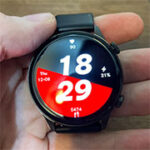The Haylou Solar Plus is the upgraded version of the original Solar smartwatch and it’s interesting that the manufacturer listened to what the users wanted to see improved and managed to correct pretty much every aspect of the device.
| Haylou Solar Plus | |
|---|---|
| Haylou.com | Check Product |
| Aliexpress.com | Check Product |
The design was mostly kept intact, but we now have a 1.43-inch AMOLED display along with an increase in resolution and there is support for Bluetooth calling, making it possible to answer calls from your wrist. This does mean that the price tag had to go up from the original Solar model (which was ridiculously inexpensive) but considering the functions and the look of the Haylou Solar Plus, it still seems that the manufacturer is selling it at a loss.
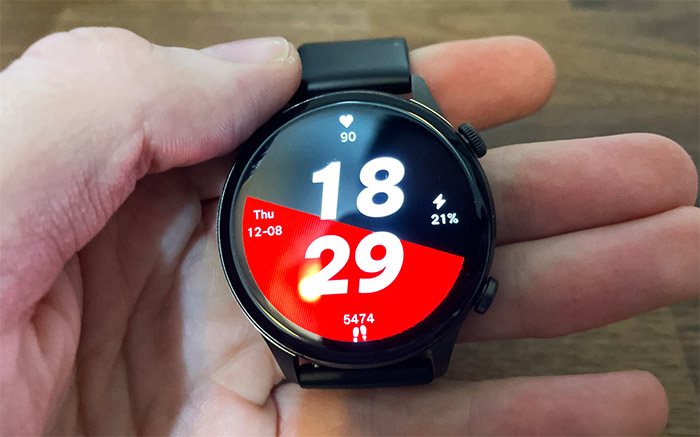
I suppose this is one way to capture more market share, but even so, after wearing the Haylou Solar Plus for more than a week, it does seem a bit more refined than your usual cheap smartwatch. Still, I did see that the software is very similar to what I saw on the Kospet T1 which was a ‘light’ clone to the Apple Watch GUI to begin with. And you do get the HR sensor, the SP01 and the blood pressure measurement tool (which in no way does it replace the actual professional device). There are a few other things that we need to talk about, so let’s put the Haylou Solar Plus to the test and see if it’s worth getting.
Design and Build Quality
Despite its name, the Haylou Solar Plus smartwatch cannot be powered using the sun and to be honest, I am not really that happy with the fact that they used the Solar term especially when there are actual smartwatches that can be charged using solar power – check the Garmin Instinct Solar. I didn’t really expect to see solar charging at this price point, but it may confuse a few people.
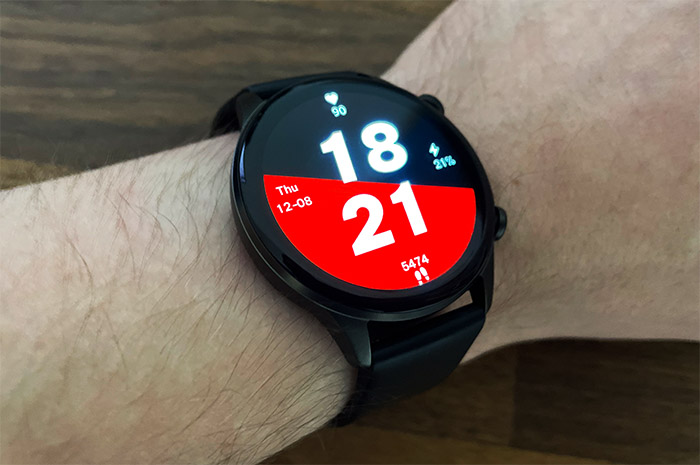
In any case, the Haylou Solar Plus has a round case, just like the Solar smartwatch and the unit that I got has a dark gray metallic frame and a black plastic rear side. The straps are also black, so Haylou went for a simple, yet elegant look. It’s not going to fool you into thinking it’s a premium smartwatch, but it definitely looks way more expensive than it actually is, especially when the AMOLED display lights up. And I do like that the bezels are small, and the glass does curve around the edges, so it’s not a rugged smartwatch, but it should survive regular use.
If you’re worrying about scratching the screen, which is entirely possible since I saw no mentions of Gorilla Glass, then you should definitely invest in a screen protector. You don’t get one pre-applied.
You do get two round buttons which sit on the frame, and they do seem to be made of plastic (although there is a ceramic-like feel to them) but it’s worth noting that the uppermost one resembled the crown from the traditional watches. It’s not a coincidence, because it is an actual crown that you can rotate, and it will move between the available watchfaces.
The rotation is very smooth, and its function is nice to have, so kudos to Haylou for adding it to the Haylou Solar Plus. If you press the crown, it will open the menu and act as the return button in the interface. The secondary button will summon the Sports section and that’s about all it actually does.
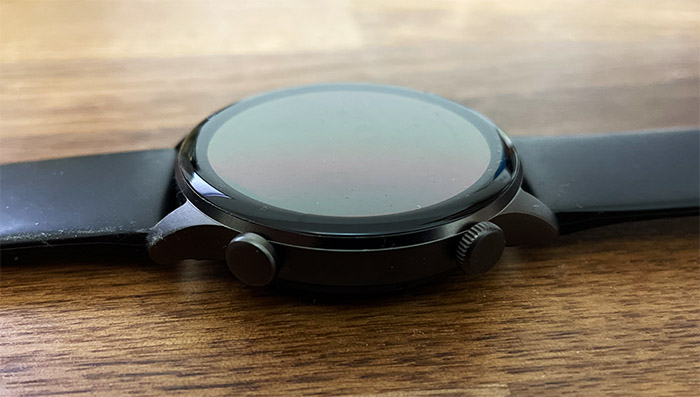
For everything else, just use the touchscreen. On the rear panel, there’s the Heart rate sensing area and this sensor will also be used for the SP01 as well as the blood pressure measurements. Next to the sensor, there are some metallic pins and magnets to attach the charging cable. And, of course, it’s entirely different to all other smartwatch brands and even to other Haylou smartwatches, such as the GST that I tested not long ago. We really need a universal charger for smartwatches as well since it’s getting ridiculous.
The straps, on the other hand are actually really good. The silicone is soft, and the way one part goes through the other creates a cleaner, more premium look. And the locking mechanism is the universal one, so you can easily switch between straps, not that you would actually want to since the default one is surprisingly good. Lastly, I need to mention that the smartwatch is IP68-rated which means that it’s dustproof and you can also wear it while it’s raining – sweat will also not harm it. This rating means that you can also submerge the Haylou Solar Plus under water so I suppose you can also swim with it, just that the Bluetooth connection will not really be stable.
The Display
The Haylou Solar Plus has a 1.43-inch AMOLED display with a resolution of 466 x 466 pixels and it’s clearly the centerpiece of the entire smartwatch.
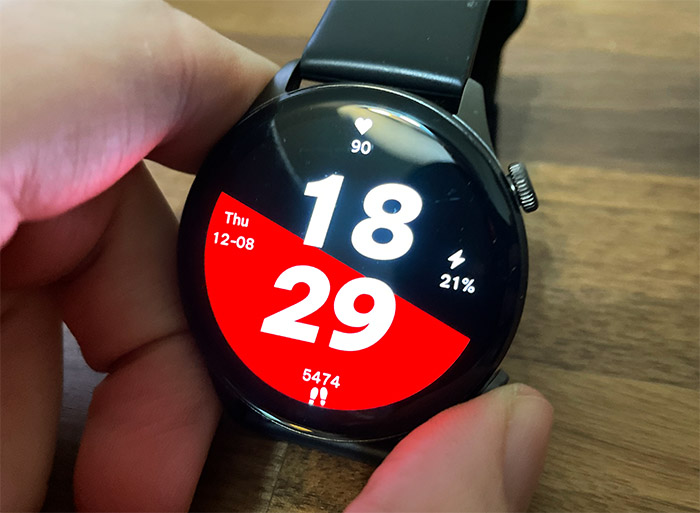
I know that some people were complaining about the Haylou Solar that had an IPS display and suffered from a fairly bad color reproduction (even if the cost of the device was about $20), so it’s nice to see that Haylou decided to go straight to AMOLED. And it was an excellent choice considering that we get deeper blacks, and the whites are not that bad either. The brightness is also surprisingly good considering that even at 50% (the default setting), I could see the screen when it was sunny outside.
All the other colors were fine, although a bit on the cooler side and overall, everything was detailed and clear. The visibility angle is also good, with barely any color shift which is another advantage of an AMOLED display. Haylou has been teasing the always on display function and while it is technically as they say – the display stays on – there are some complications. First of all, you need to choose for how long the smartwatch can have the display enabled (a few seconds to half an hour) and secondly, it’s not some low-power mode which displays only some info, as it happens on smartphones.
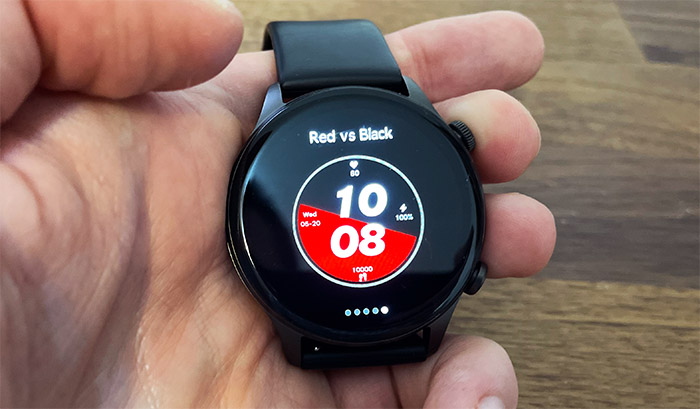
No, it’s the actual watchface at the set brightness. This means that a lot of battery will be lost, so it’s a bit of a gimmick. One interesting implementation was from TicWatch which had two screens and even the idea of constantly charging the smartwatch via solar power could prove to be a viable alternative. In its current state, this can’t be called a good AoD implementation.
The Internal Hardware and Connectivity
As usual, the manufacturers rarely disclose what’s inside their smartwatches, especially when dealing with inexpensive devices, but the good news is that Haylou has submitted some internal photos on the FCC ID website. Well, the bad news is that the photos are very low res and blurry, so I could only see that the Haylou Solar Plus is equipped with a Realtek RTL8763E (?), but nothing on the RAM. It does seem that the storage is 16MB as shown by various retailers.
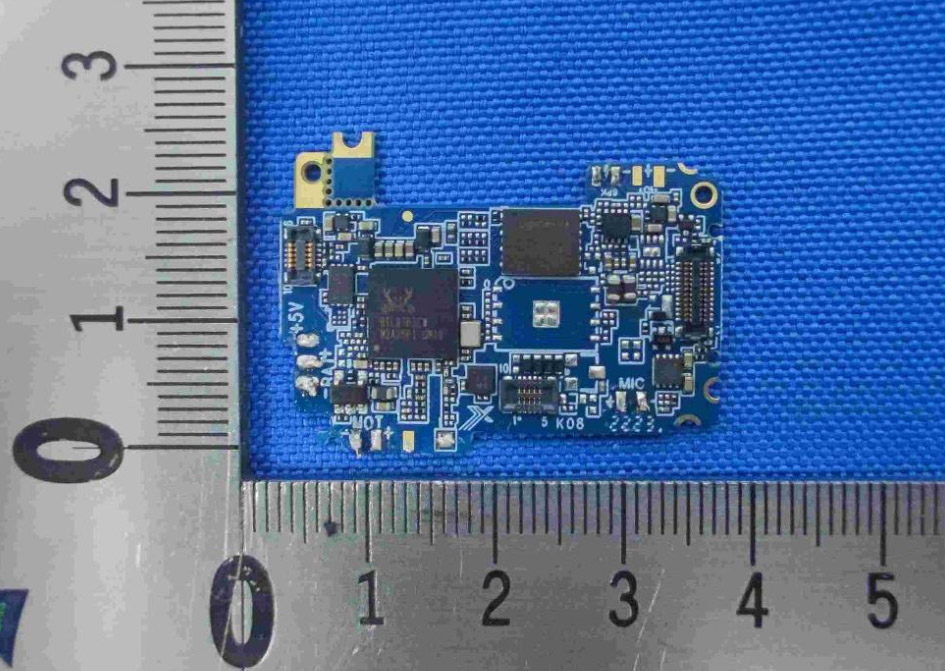
That being said, when I was navigating through the interface, I experienced no freezes or slowdowns, so it’s clear that the software is very lightweight, but the hardware is also well optimized. In terms of connectivity, the Haylou Solar Plus uses Bluetooth v5.2 to connect to your phone which may be a bit overkill, but then again, more data is transferred during calls, so it’s not a bad idea to have a bigger threshold available. In terms of coverage, just like with every other device that uses Bluetooth 5.0+, it’s about 30 feet with no line of sight.
Are the sensors accurate?
The heart rate sensor seems a bit better than on other inexpensive smartwatches and it’s not necessarily about the proper accuracy, which you will not see at this price point, but about the stability of the actual measurement.
Instead of fluctuating wildly as I saw on the Kospet T1, the heart rate reaches a specific value and stabilizes there, as it should. There is continuous HR measurement which checks you heart rate every then minutes but do know that the Haylou Solar Plus will not fare that well with intense activities when the heart rate lower and raises suddenly over short periods of time.
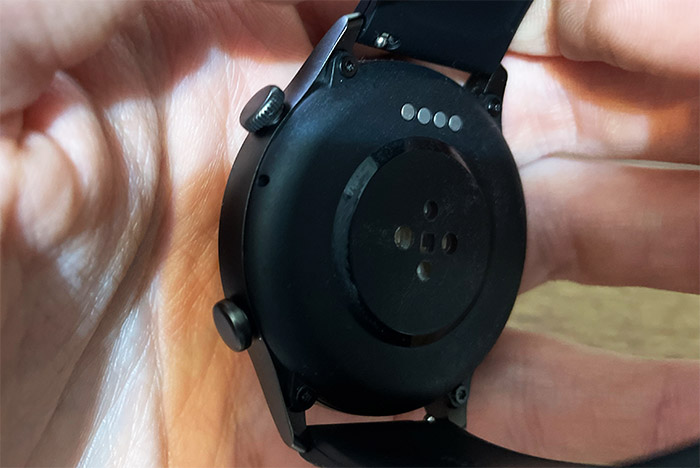
The SP01 sensor is maybe accurate, may be not since I have no way of checking whether it’s properly measuring the O2 level in the blood. The blood pressure is not accurate and as far as I know, no other smartwatch is currently accurately measuring the BP, so take the values with a grain of salt. The Haylou GST wasn’t that great when measuring the sleep activity, but it seems that the engineers fined tuned the algorithm so that the Haylou Solar Plus is much better at knowing when you’re awake or asleep.
The Software Experience
The software of the Haylou Solar Plus is entirely different than the GST, adopting a somewhat similar approach to the Apple Watch, kind of. And I have noticed that it’s not just one smartwatch, it’s the majority of them that got upgraded to a better-looking GUI. What I have observed is that one manufacturer comes with a good idea (or is ‘inspired’ by a more expensive device) and then the API seems to be shared among a large number of brands which slightly adjust it to fit their needs.
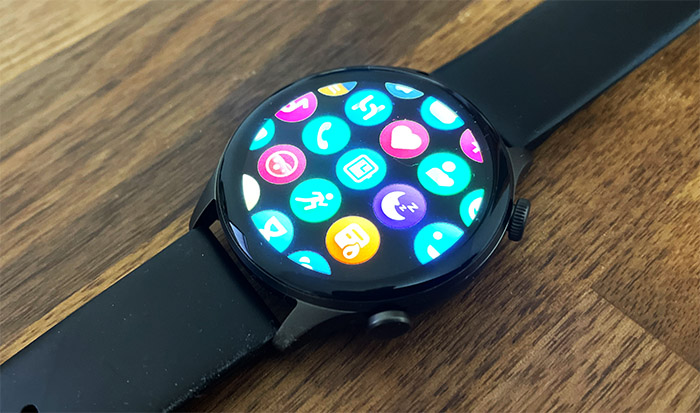
That’s why I said that I saw a very similar interface on the Kospet Tank T1 as well as on the Haylou Solar Plus. You can change the watchfaces in the same manner – by tapping and holding on the main screen, but the menu itself is changed, having lots of ‘apps’ populating the display in a circular manner. You can control a media player, check messages, the settings and many more, but I did see some new functions as well.
One of them is the Emotion which I assume reads the HR and concludes whether you’re relaxed or not. And there is also a Stress test that you can take which I think works in the same manner as the Emotion app. Since you can answer to calls from the smartwatch, the manufacturer has added a dedicate section (called Phone) where you should be able to see the recent calls (which didn’t properly populate for some reason), and the Contacts list was empty which means that it’s not cooperating that well with the phone. There is also a Sports section and, from what I saw, it has almost every type of training that you may have in mind (including the rarely found weightlifting).
There is an actual app that you need to install in order for the smartwatch to communicate with the smartphone. It’s called Haylou Fun, and it is compatible with iOS and Android. The app will collect some data, so be careful which data you sync with it. That being said, you can see some graphs for activities and it’s possible to change the watch faces. There is a good number of watchfaces available, but I admit I wanted the list to be a bit larger – hopefully, they’ll add more in time.
The Battery life of the Haylou Solar Plus
The Haylou Solar Plus has a 280mAh which is perhaps the only downgrade from the original Solar smartwatch. It can still hold its own though since with 50% brightness and lots of time checking, it managed to easily reach 5 days on a single charge. It’s also great to see that the tilt-to-wake is so much better implemented than on the Kospet smartwatches.
The Conclusion
Haylou has made some serious progress in the last couple of years when developing its smartwatches line and the Solar Plus manages to offer fantastic value for the money. You get an AMOLED display, fairly long battery life and the possibility to answer calls from your wrist. The software is lightweight, and it doesn’t really compare with, let’s say, an Apple Watch. But that’s not the point. The Haylou Solar Plus is meant to offer a good smartwatch experience at an incredibly reduced budget, and it manages to achieve its goal.
Haylou Solar Plus
-Pros
- AMOLED display
- Can answer to calls via Bluetooth - has an internal microphone and speaker
- I liked the smooth crown rotation
- The straps are soft, and I liked the closing mechanism
- IP68-rated
Cons
- Solar in the name does not mean that the smartwatch is solar powered
- The AoD feels like a gimmick

Mark is a graduate in Computer Science, having gathered valuable experience over the years working in IT as a programmer. Mark is also the main tech writer for MBReviews.com, covering not only his passion, the networking devices, but also other cool electronic gadgets that you may find useful for your every day life.

